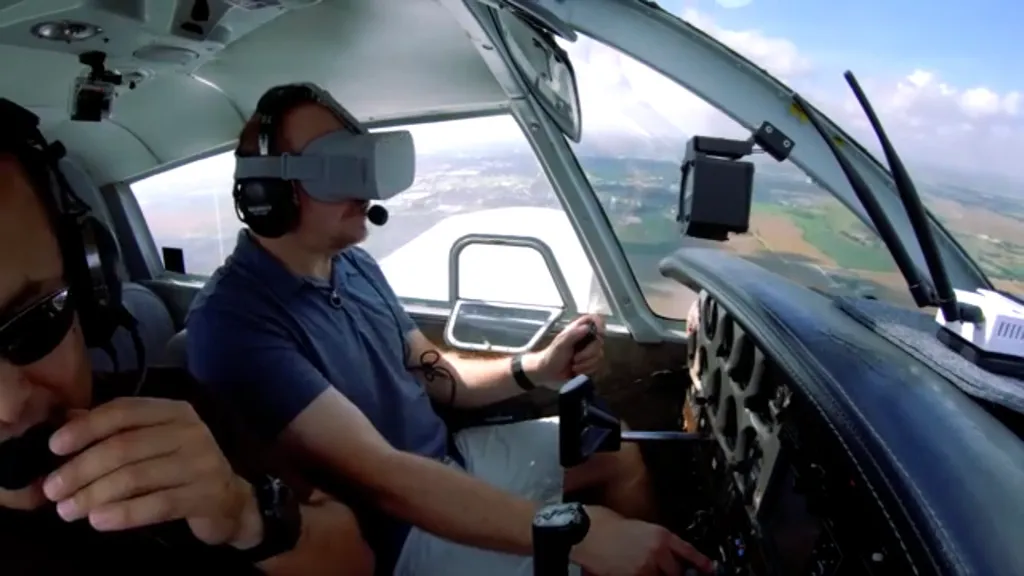Co-founders of a Texas-based company called Thrust Vector, which does contract development and consulting for both AR and VR, used Oculus Go while piloting an aircraft and say they have flown “probably 2 dozen full approaches in full VR, all the way down to about 50 feet above the runway.”
CTO John Nagle wrote in an email to us that they used mapping software Mapbox along with the Unity world engine and “Oculus Go in this case because it represents the lowest cost VR device, and we wanted to show it was fundamentally capable enough to work.” In a video demonstration, Nagle is shown piloting an airplane with co-founder John Paul Sommer as “safety pilot.” Inside Oculus Go, an application renders visuals for Nagle based in the information supplied by “an open source ADS-B sensor called Stratux, which also has an AHRS capability (Attitude and Heading Reference System.) It uses a WAAS-enhanced GPS for position.”
“It is still 3DOF, but it is airplane-referenced. In an airplane, the headset rotates in 2 ways; the airplane can turn, and your head can turn also. We do the math to keep head motion airplane-relative. We do plan to use more powerful headsets in future tests, of course,” Nagle wrote.
“We always acted as safety pilot for the other during testing, so we were never actually flying blind. The approach boxes bring you perfectly down the approach path, and the MapBox data has sufficient fidelity to really give me confidence that I know where I am. We’ve also done a number of ‘unusual attitude’ tests, where one of us is eyes-closed, head-down, while the other does a series of steep and aggressive maneuvers in an attempt to cause disorientation. Then, the pilot will say, ‘your airplane’, at which point the other person will don the headset, right the aircraft, and bring it in for landing.”
The idea is that with a “PC-driven VR system such as the Oculus Rift, we can create an endless array of training scenarios; poor weather, equipment failures, even combat scenarios with virtual ground and aerial targets. And unlike a simulator, the trainee will feel every stick input for real. The irony here is, many people using VR flight simulators experience nausea, because they’re seeing movement that their body doesn’t actually feel. Having VR in-flight can actually prevent nausea, because your sight is now in total agreement with your vestibular system.”
Nagle added that he believes “FAA approval is usually relegated to things which are permanently mounted in the cockpit. Nonetheless, we look forward to working with the FAA as we refine the technology to make sure we stay within the boundaries of common sense and the regulations. After all, ultimately the goal is to improve safety, not compromise it.”






























